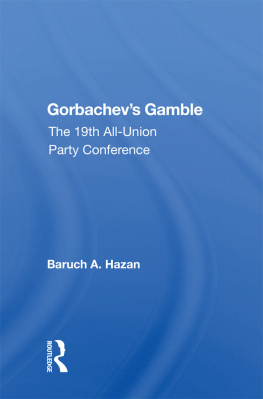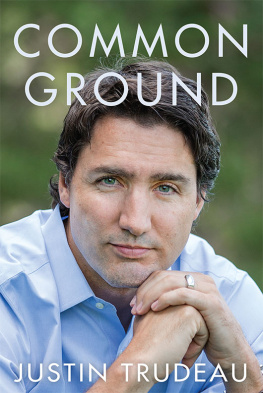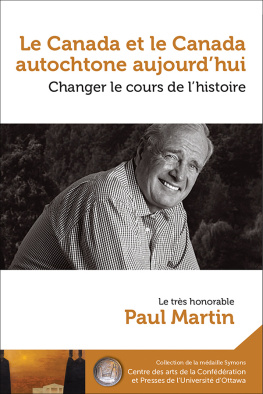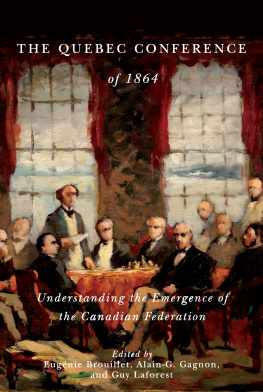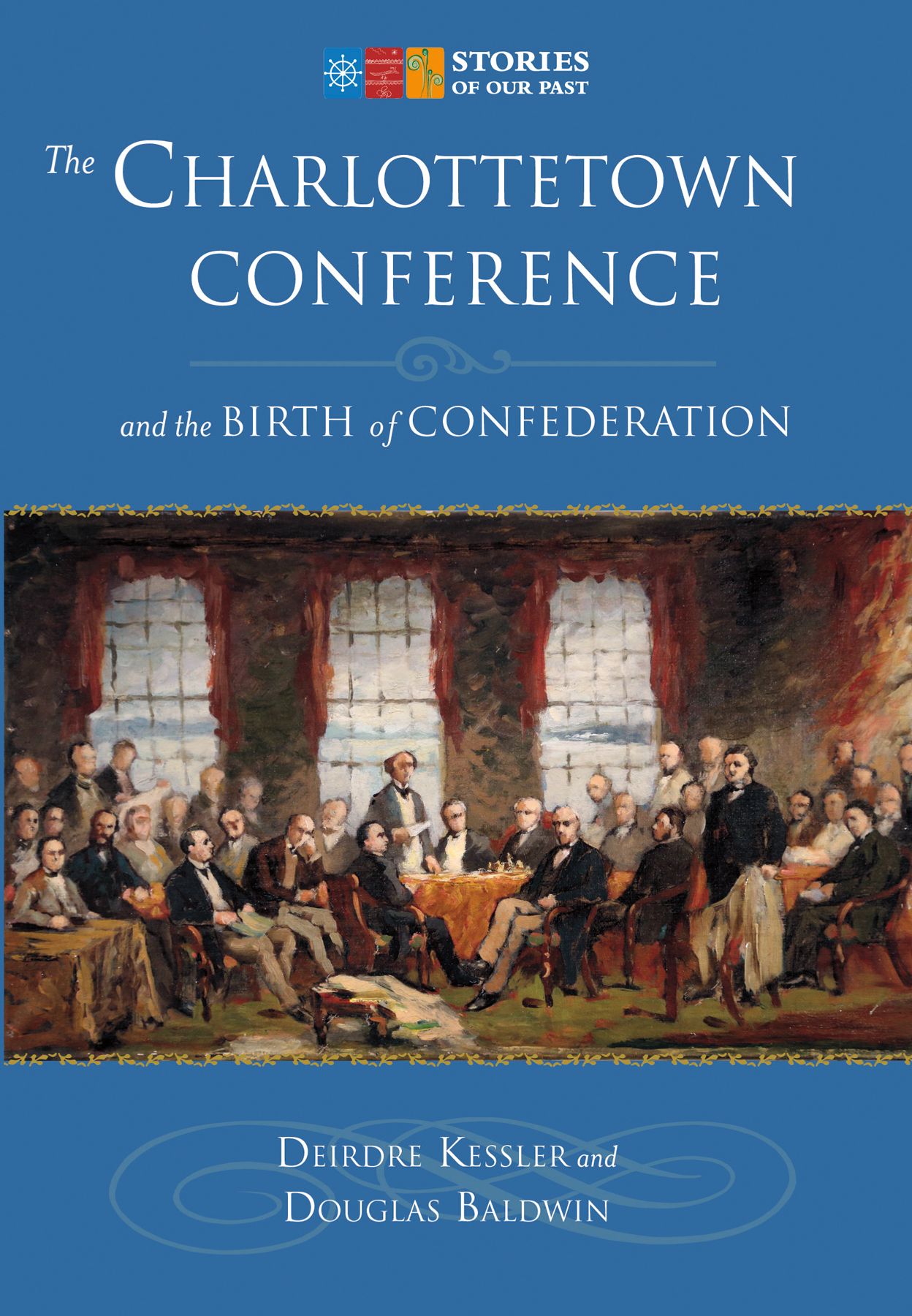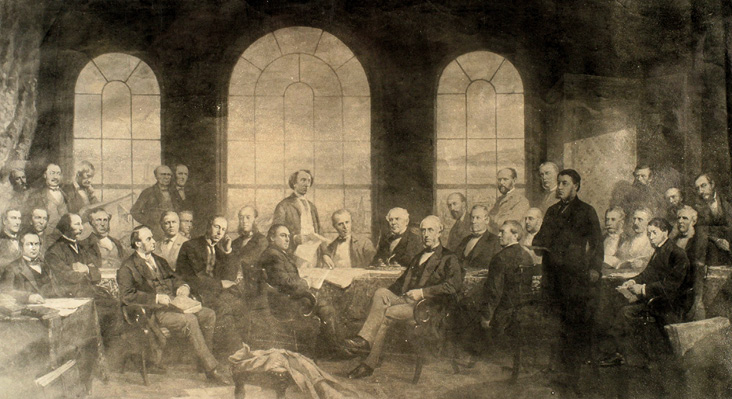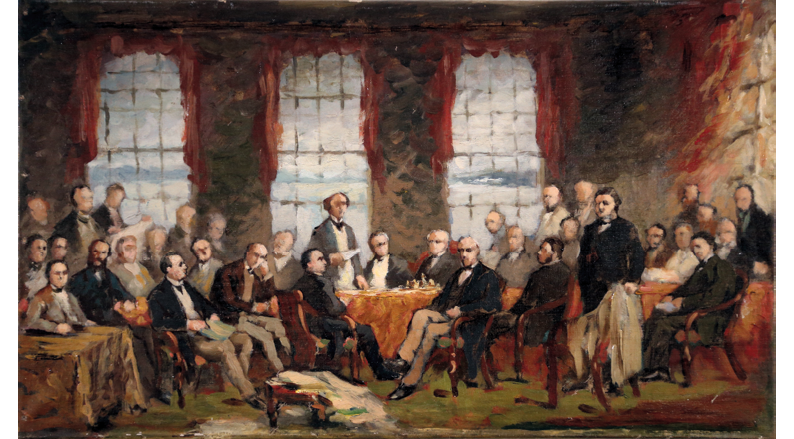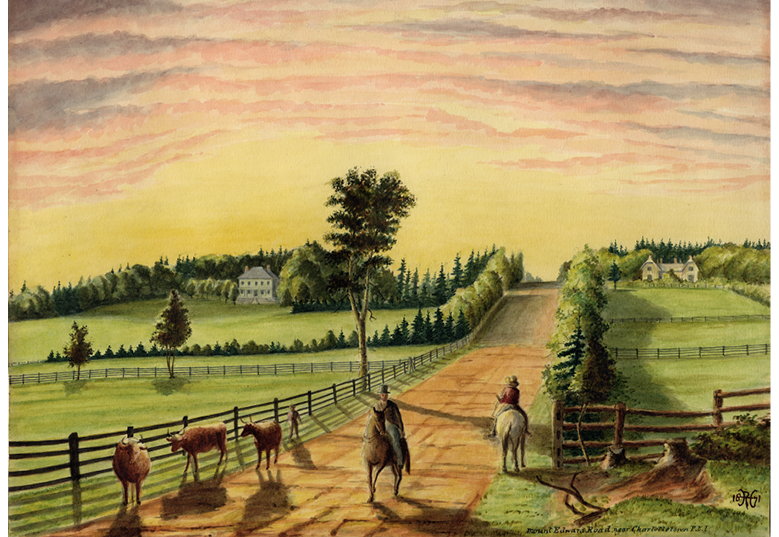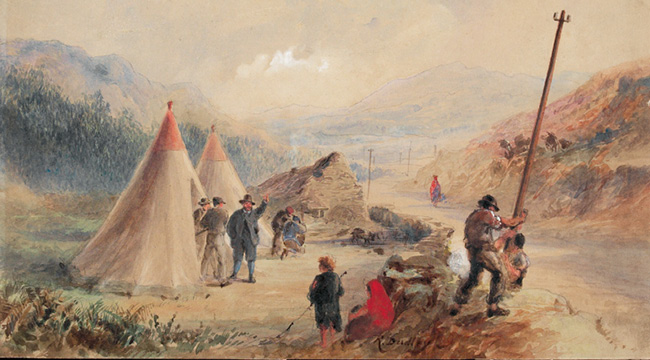Copyright 2015, Deirdre Kessler and Douglas Baldwin
All rights reserved. No part of this book may be reproduced, stored in a retrieval system or transmitted in any form or by any means without the prior written permission from the publisher, or, in the case of photocopying or other reprographic copying, permission from Access Copyright, 1 Yonge Street, Suite 1900, Toronto, Ontario M5E 1E5.
Nimbus Publishing Limited
3731 Mackintosh St, Halifax, NS B3K 5A5
(902) 455-4286 nimbus.ca
Printed and bound in Canada
NB1169
Cover image: Oil Study For Repainting Th e Fathers Of Confederation, 1916, by Robert Harris. Confederation Centre Art Gallery.
Design: Jenn Embree
Library and Archives Canada Cataloguing in Publication
Kessler, Deirdre, author
Th e Charlottetown Conference : and the birth of Confederation / Deirdre Kessler and Douglas Baldwin.
Includes bibliographical references.
Issued in print and electronic formats.
ISBN 978-1-77108-320-1 (paperback).ISBN 978-1-77108-321-8 (pdf)
1. Charlottetown Conference (1864). 2. CanadaPolitics and government1841-1867. 3. CanadaHistory1841-1867. I. Baldwin, Douglas, 1944-, author II. Title.
FC476.K47 2015 971.049 C2015-904316-6
C2015-904317-4
Nimbus Publishing acknowledges the financial support for its publishing activities from the Government of Canada through the Canada Book Fund (CBF) and the Canada Council for the Arts, and from the Province of Nova Scotia. We are pleased to work in partnership with the Province of Nova Scotia to develop and promote our creative industries for the benefit of all Nova Scotians.
Painting the Fathers of Confederation
Confederation Centre Art Gallery
Photograph of Robert Harris s original 1883 painting,
Fathers of Confederation.
Robert Harris was several weeks shy of his fifteenth birthday when he played in the band that performed for the politicians who arrived in Charlottetown, Prince Edward Island, in 1864. Almost twenty years later, the Canadian government hired Harris (18481919) to paint the Fathers of Confederation in commemoration of the twentieth anniversary of the Charlottetown and Quebec Conferences. Determined to be as accurate as possible, Harris met with those Fathers of Confederation who were still living, collected photographs of those who had died, and sent handwritten questionnaires to the surviving delegates and their families asking about such topics as height, whiskers, hand size, nose and lips, clothes and cravats. Th e thirty-three questionnaires brought twenty replies. From them, Harris learned that the Fathers wore black and that all but one wore black cravats. He next visited the site of the Quebec Conference and made notes.
Confederation Centre Art Gallery
Mahogany Sketch Box With Harris Self-portrait. Painting by Robert Harris, 1908.
Th e painting took Harris a year to finish and, when completed in 1884, brought him instant fame. It was hung in the Parliament Buildings at Ottawa and later appeared on several Canadian postage stamps and in classrooms across the country. When the Parliament Buildings were destroyed by fire in February 1916, Harris s painting was burned. All that remained was the charcoal sketch from which he had made the original. Th e government approached Harris to reproduce the work, but the sixty-seven-year-old was partially blind and disabled , and he persuaded the government to purchase the original sketch that had been rolled up for thirty-three years.
Confederation Centre Art Gallery
Oil Study for Repainting the Fathers of Confederation, 1916.
Painting by Robert Harris.
Harris was a keen observer of people and of places, and as a young man his sketchbook was always at hand. In fact, his teachers admonished him for sketching so much, warning him that his handwriting would suffer. Among the five thousand Harris works at the Confederation Centre Art Gallery in Charlottetown are his early sketches and watercolours of Charlottetown and rural Prince Edward Island. Some of these works, reproduced in this book, illustrate the life and times of Confederation.
Introduction
Setting The Stage
Confederation would enable all the provinces to cooperate for all common purposes and above all form a great and powerful people possessing the means of securing good and responsible government.
John George Lambton, Earl of Durham, 1839
Confederation Centre Art Gallery
Mount Edward Road, north of Charlottetown.
Watercolour by Robert Harris, 1871.
Th e year 1867 is one of the most important dates in Canadian history. After three years of on-again off-again discussions, Canada was born.
Th e 1860s was also an important decade for many other countries. Th e United States experienced a civil war, which resulted in the official end of slavery. Similar to Canada, Italy became a nation. Mexico regained its independence from France and both Puerto Rico and Cuba fought (unsuccessfully) to gain freedom from Spain. Austria-Hungary united as one nation. Luxembourg gained its independence. In Russia, the serfs gained their freedom from the landowners. In Asia, American warships forced Japan to open its borders to Western trade and ideas. Th e most newsworthy event of 1867 was probably the United States s purchase of Alaska from Russia for $7.2 million.
Th e decade was just as important for scientific and technological advances. Alfred Nobel invented dynamite. French inventor douard-Lon Scott de Martinville made the first audio recordinga ten-second-long recording of a folk song. Scotland hosted the first professional golf tournament. In 1866 Th omas Crapper patented the flush toilet and Andrew Rankin patented the urinal. Th at same year the Atlantic Cable allowed transatlantic telegraph communication, and in 1869 the first ship sailed through the Suez Canal. Other important milestones included the invention of the typewriter and the discovery of germs. In Peru, a magnitude 8.5 to 9.0 earthquake followed by a tsunami killed twenty-five thousand people.
Library Archives Canada
Erecting the land line for the first transatlantic cable, 1866.
Watercolour by Robert Charles Dudley.
Early Thoughts on Confederation
From American independence in 1783 to Canadian confederation in 1867, the British colonies and territories in North America were usually lumped together as British North America (BNA). Th e idea of uniting Britain s colonies in North America goes back until at least 1754, when the Th irteen Colonies in what is now the United States started thinking about separating from Great Britain. Although the idea wasnt forgotten, it wasnt until John George Lambton, the Earl of Durham, was sent to BNA in 1838 to report on the 1837 rebellions in Upper and Lower Canada that the idea of Confederation was revived and given some weight.


